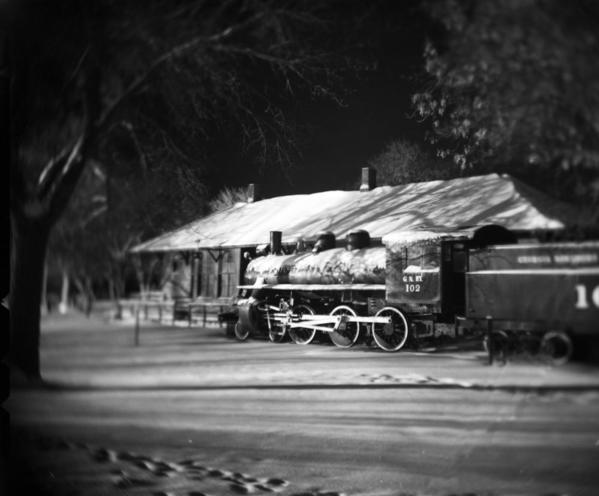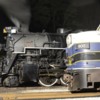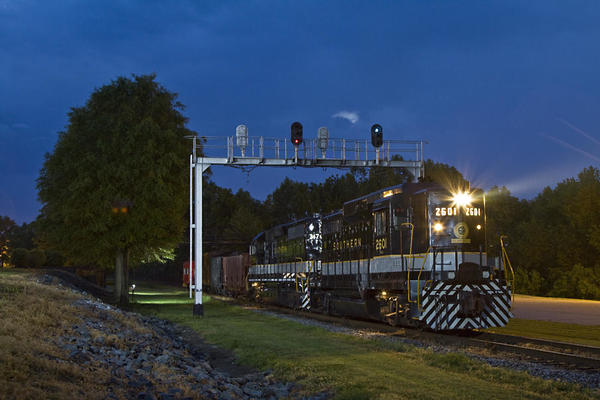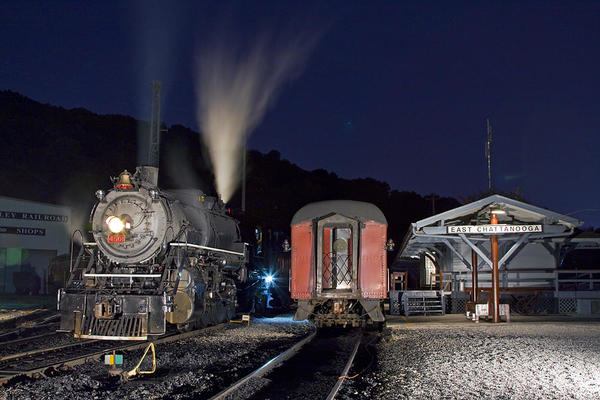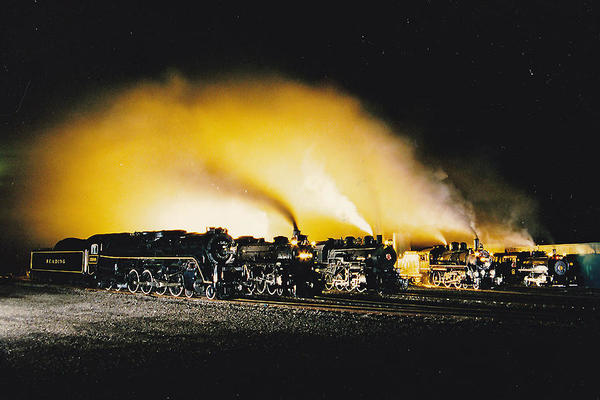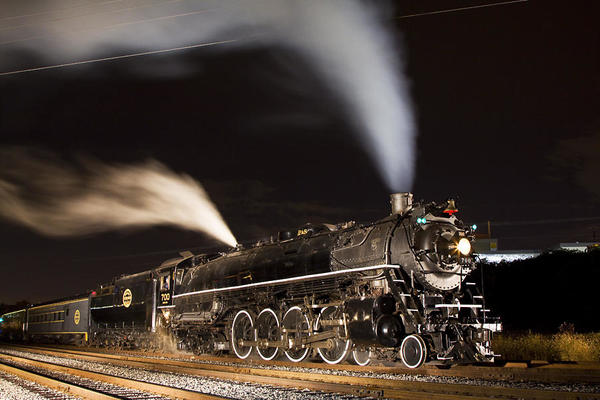I've been shooting trains at night for 15 years, and for the past ten years using flash (NOT flood lights.) I've just returned from Back East where I shot a moving steamer on two nights. I am primarily a night photographer in winter. I have some thoughts.
1. This isn't hard at all. You need to put the camera in manual mode and use the meter bar in the viewfinder. No program mode is going to accurately meter here as it will try to lighten the exposure to daytime levels. Use the in-camera meter as a base, and then start subtracting exposure. (Maybe as much as --2)
2. I use a Nikon D800E, the same camera I shoot weddings with. NOTHING, I repeat, NOTHING is cheap about pro cameras. Even more important than the camera are the LENSES! My camera is worth about $1,500; I have about $10,000 in lenses, and my tripod & head go for $800 (used) on ebay. (Also have $6,000 worth of flash.) Nothing is cheap about pro gear. Biggest beginner mistake: putting big money on a camera and then going cheap on lenses.
3. For a reasonably priced camera that will easily do the job, look at the Nikon D7200. It's a near-pro camera. It's Sony sensor will do better with night shots than any Canon camera. The Sony sensors have much more dynamic range than the Canon sensors, and for this kind of shooting that makes a difference. Shoot NEF (RAW) and process using Lightroom or PSE. You will also need superb lenses, either a 17-50mm f2.8 zoom or a Sigma 20mm f1.4 & Sigma 35mm f1.4 ART lens. (I typically use a Nikon 24mm PC-E lens, but those are about $2K.) You really don't need a "pro" camera for this. Parked trains are VERY easy.
4. Find out what ISO will give you the image quality with the most noise you will tolerate. For the D7200 that's generally around ISO 2000. For my D800E I rarely go over ISO 3200. (Most of my shots are ISO 800.)
5. Focus. This can be difficult. Focus on any point of light on the engine, remembering that half of your DoF falls in front of focus point and half in back of it. If no lights on the train, place a small flashlight pointed at camera on the engine, focus on that, then remove the flashlight. Camera on tripod, of course.
6. You absolutely need to practice for at least four nights before going on an outing.
7. Either be looking through the viewfinder of the camera or cover it with your thumb or hat when taking a shot so stray light won't enter.
8. To get rid of ghosting, move the camera position around until it disappears.
9. If there is no light put on the engine, I'd start with ISO 1600 and f2.8, 1/30s. Look at your histogram and adjust from there. With floodlights, start with ISO 800 and f4. General rule: keep ISO as low as you can, don't go over f8 or under f2.8 if that's possible. For shutter speed, try 5s if no lights, and and 1/30s if there are flood lights.
10. Consider bringing a good flashlight and use Light Painting technique. This is HIGHLY effective!
11. The train isn't moving. This is very easy to do IF you know your camera, understand exposure, and PRACTICE. Most of my night shots involve MOVING trains, and this many orders of magnitude more difficult!
While "trains on the hoof" (moving trains) are more my thing, I've often wanted to do one of these railfan nights using my 1926 Gundlach Korona 5x7 with vintage lenses from the 1920s, ISO 400 film. Since the engines aren't moving, this is not hard. I'd meter with an incident light meter as I did in the below shot.
Below photo was taken using a Chamonix 045n camera (4x5,) using ISO 400 film, and an f2.8 lens made in 1845. Even photo gear made 100+ years ago can do these kinds of shots easily. I used two small Nikon SB-25 flash fired using the Open Flash technique. It's not hard unless..............the trains are rolling.
Second photo is UP 3985, rolling 60 mph through Holden MO. I used about eight huge flash and radio triggers.
